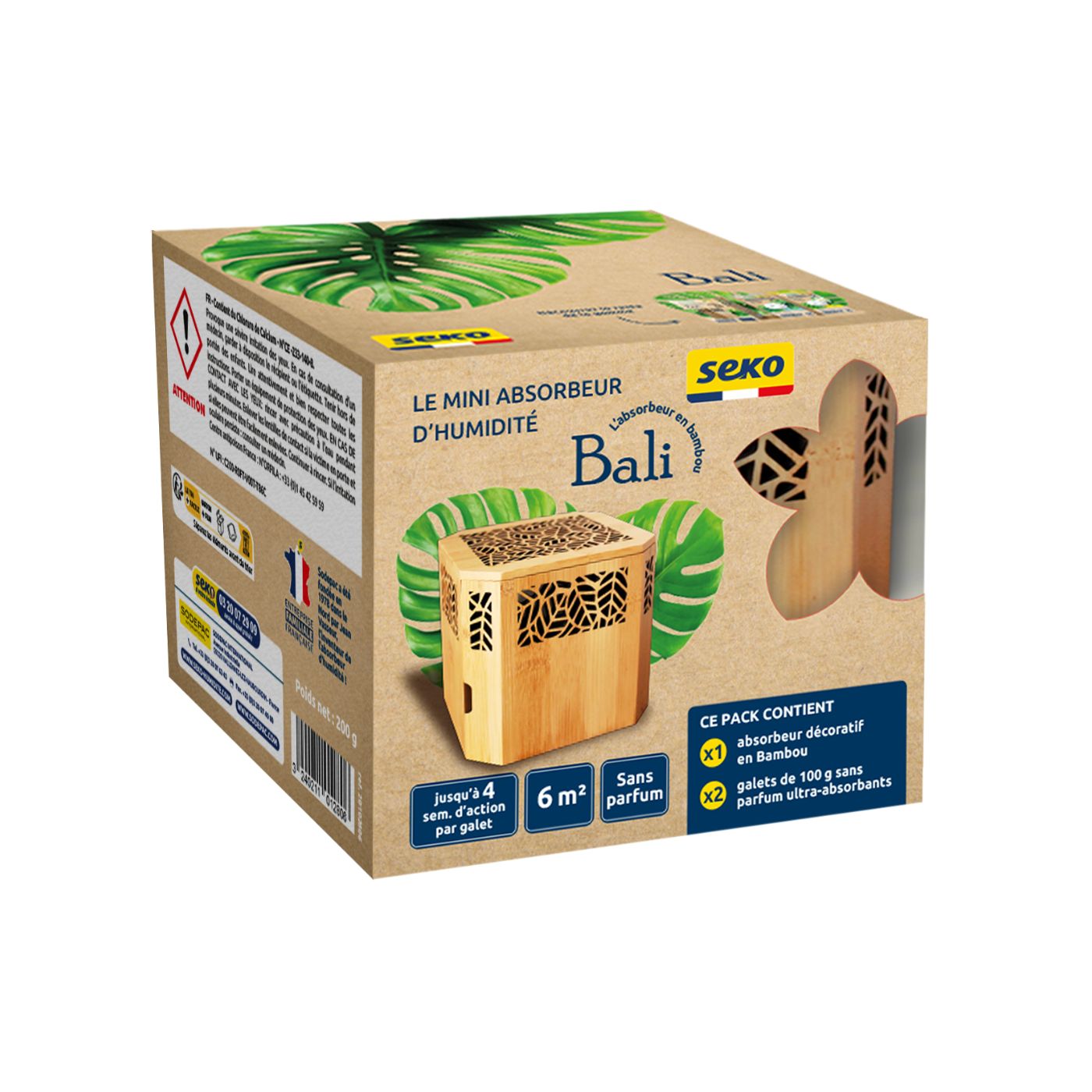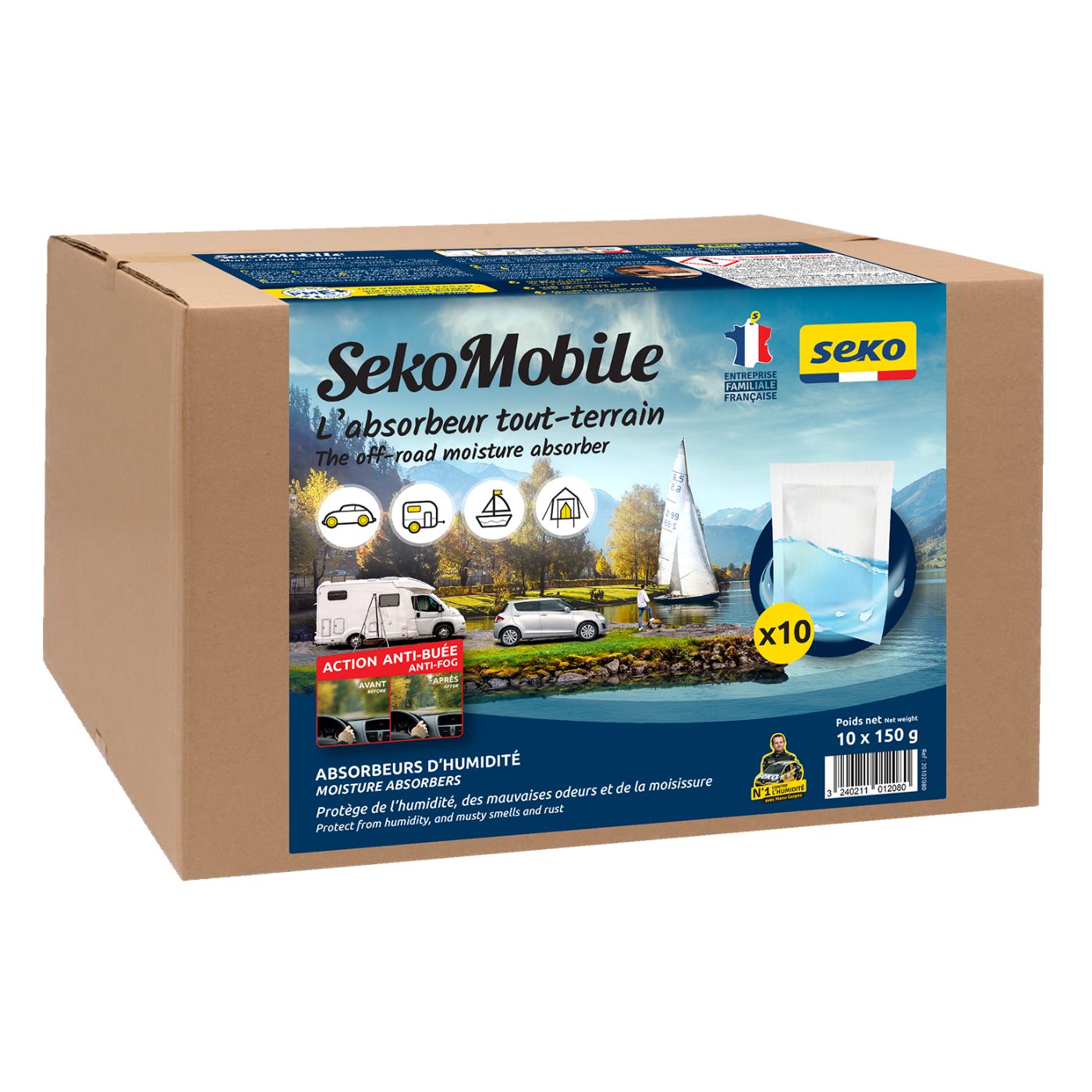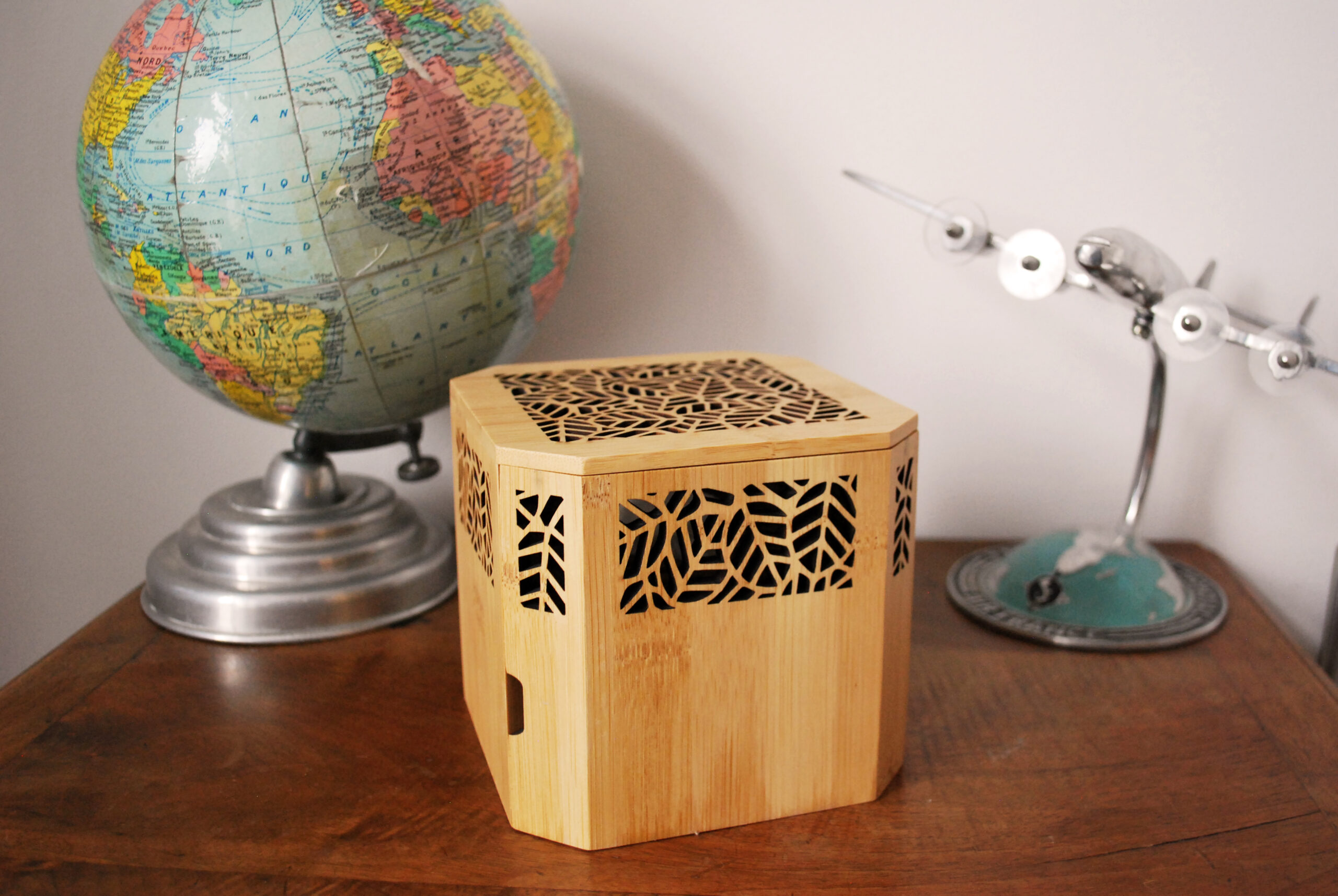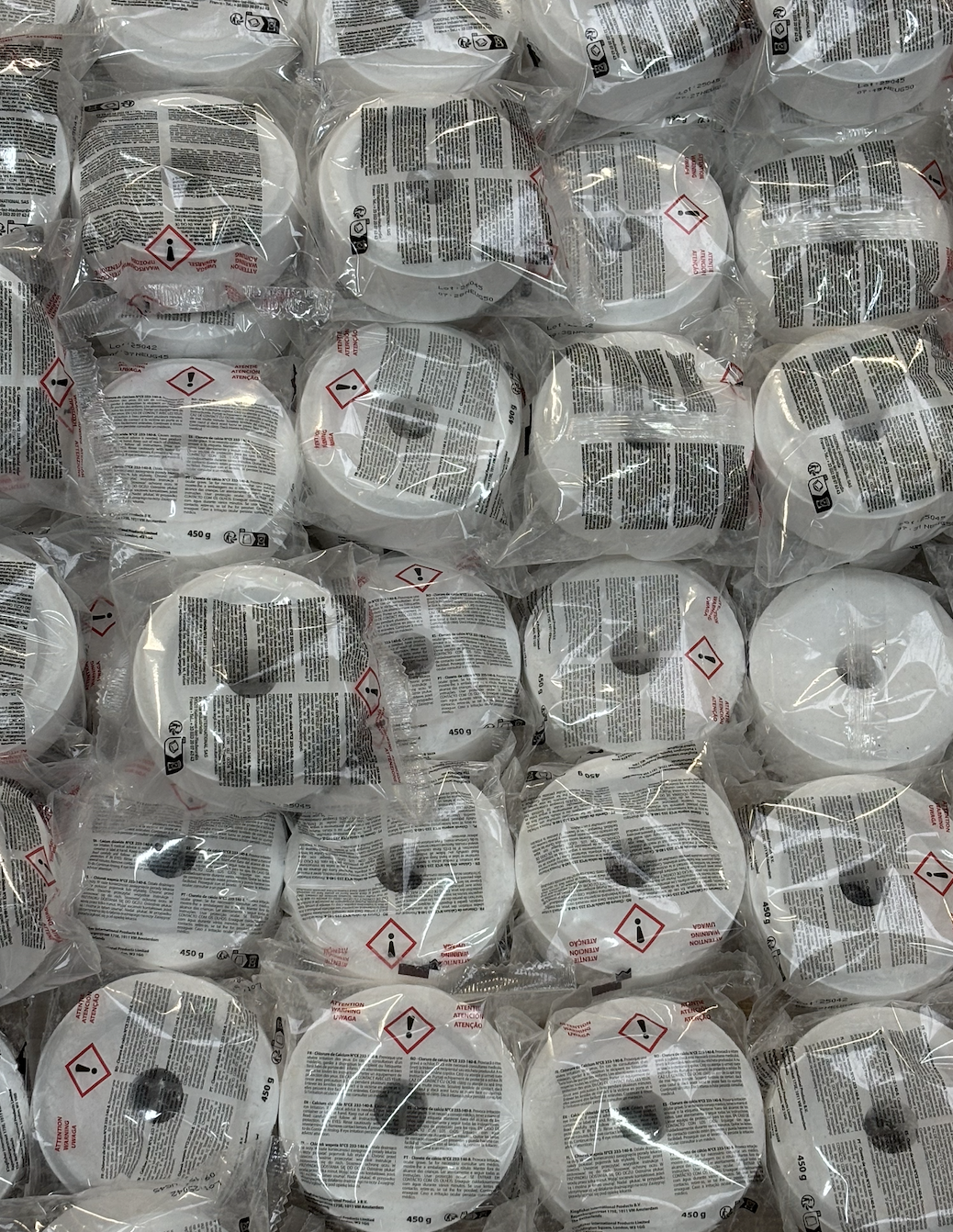Excessive moisture in the home can cause a variety of problems, including the development of mould, unpleasant odours and damage to furniture and walls. Moisture absorbers are an effective solution for resolving this issue. Several refill options are available: moisture-absorbing sachets and moisture-absorbing tablets. So, which is the right choice to meet your requirements?
Where is the moisture coming from?
Humidity can have several causes: poor ventilation, leaks or excessive condensation due to temperature variations. This can have serious consequences such as the development of mould, mildew and damage to walls and furniture. It can also affect the health of occupants, by aggravating certain allergies or respiratory conditions. To avoid this, it is important to regulate humidity levels using an appropriate moisture absorber.
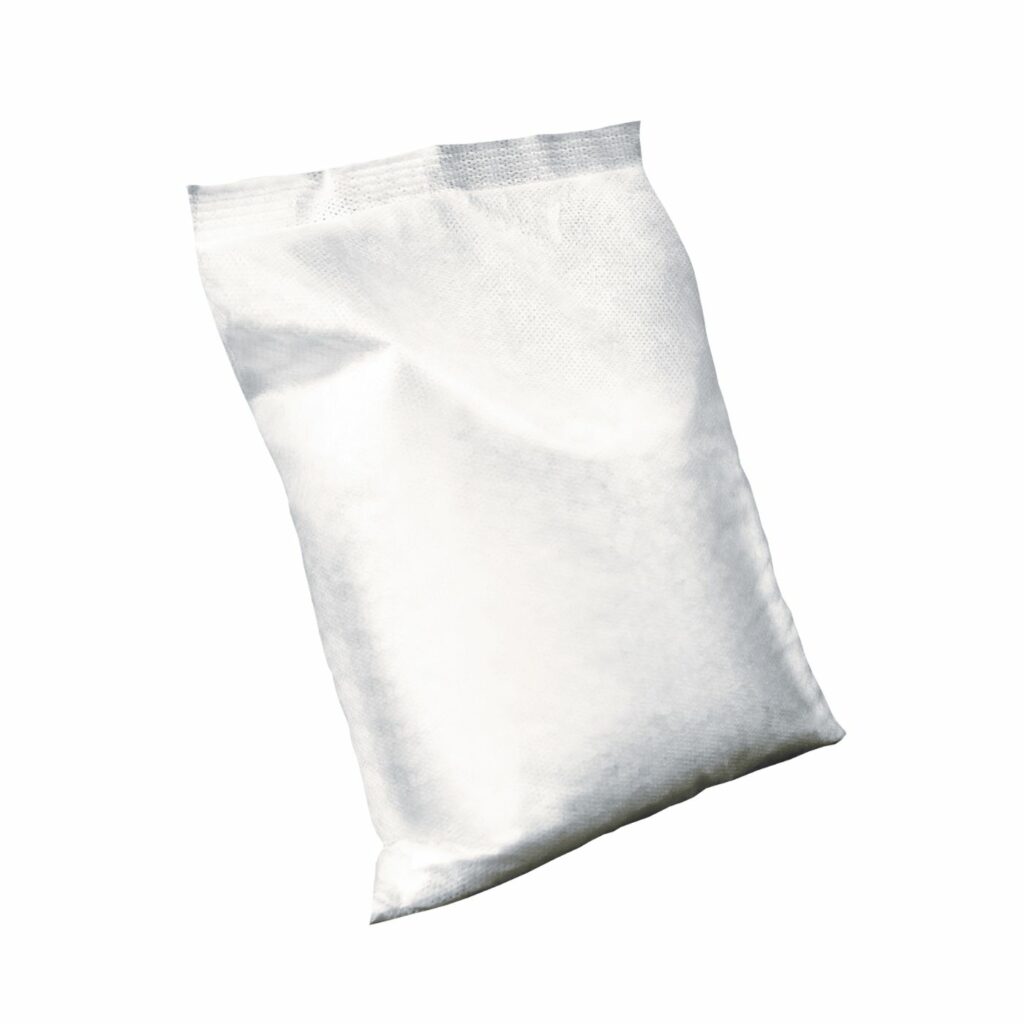
Moisture-absorbing sachets: recommended uses
Moisture-absorbing sachets are placed in a unit, as is the case for absorbent tablets. Their job is to capture moisture using calcium chloride crystals, which absorb excess moisture from the air and convert it to liquid. Once empty, the sachet should be discarded and replaced with a new one.
Their main advantage is ease of use: once placed in the unit, they work independently, requiring no further intervention until replacement. They create more waste than absorbent tablets, however, since the sachet must be discarded after use.
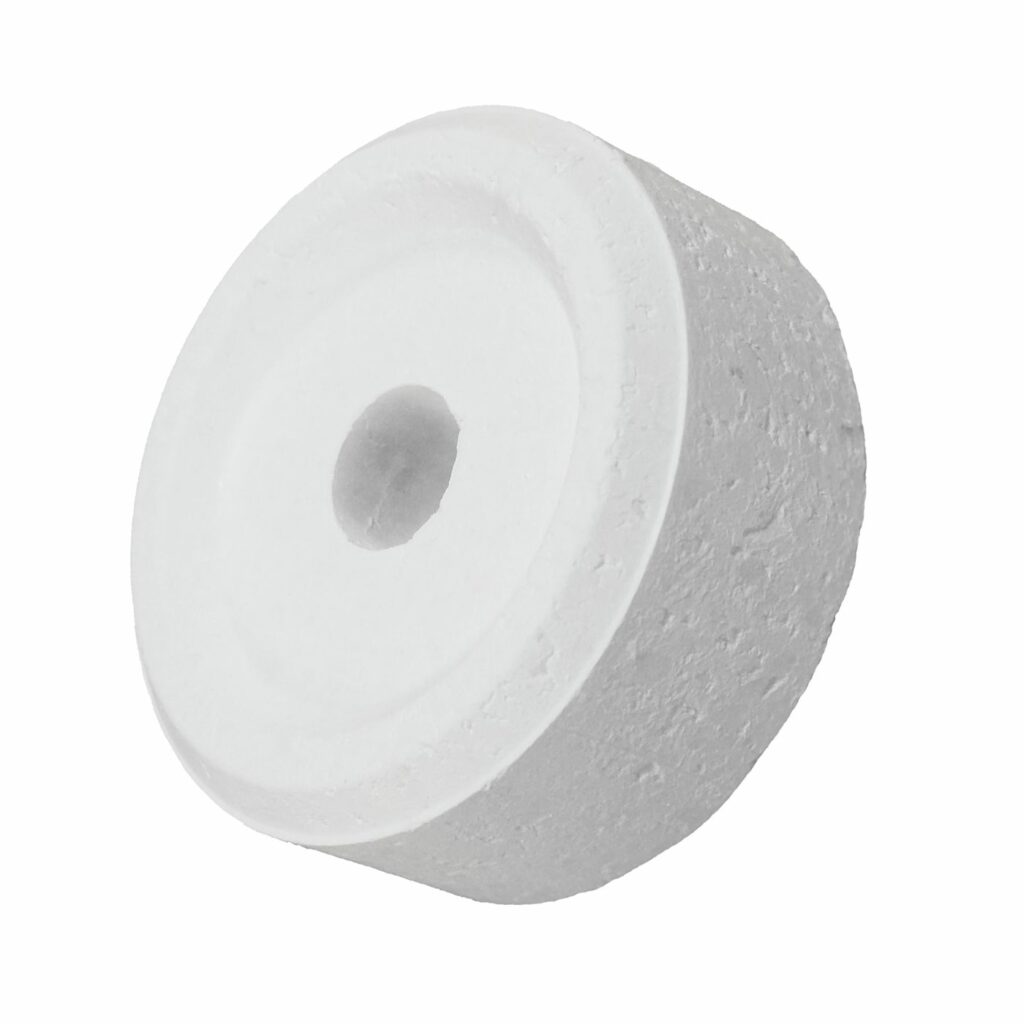
Moisture-absorbing tablets: recommended uses
Absorbent tablets are also placed in a unit but use a slightly different technology. Irrespective of their shape, tablets absorb moisture more quickly than sachets. This is because the air comes into direct contact with the calcium chloride, whereas when using sachets, this contact is slowed by the packaging.
Another advantage is that, unlike sachets, tablets do not generate any plastic waste. Once dissolved, all you need to do is replace the tablet, making it a more simple and eco-friendly solution.
This option is ideal for rooms such as lounge areas, where fast moisture absorption is required. Tablets start working quickly since the calcium chloride is in direct contact with the air, but they have a shorter lifespan.
On the other hand, sachets are recommended for areas such as garages or cellars, where slower, longer-term action is preferable. Thanks to their packaging, which slows down contact with the air, they offer continual moisture management for longer periods.
Moisture-absorbing sachets or tablets: comparing performance
Choosing between moisture-absorbing sachets and tablets mainly depends on the speed of absorption required. Tablets offer faster absorption due to direct contact between the calcium chloride and the air, but their lifespan is shorter. On the other hand, sachets act more slowly but continually, making them ideally suited for long-term moisture management.
The most appropriate technology does not depend on the size of the room: simply adapt the absorption volume required by selecting a smaller or larger absorber or by adding several refills.
What type of absorber is recommended for each situation?
Choosing between moisture-absorbing sachets and tablets depends on the type of absorption required. Tablets offer fast-acting absorption, thanks to direct contact with the air, but will work for a shorter period. Sachets, on the other hand, work more slowly but remain effective for a longer period.
The choice should be based on the action required rather than the size of the room: for an immediate effect, tablets are ideal; for prolonged use with less maintenance, sachets are a simple and long-lasting solution.

